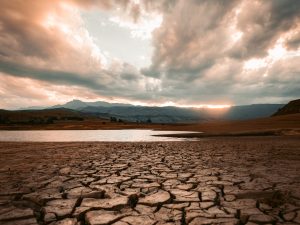
Guide: Choosing the Right UV Light Disinfection
There are many methods of UV Light Disinfection, and here are the various types and the tools that adopt the respective technologies.
This is a simple question, but unfortunately, there is no simple answer. It is theoretically impossible to have a single magic number that you can multiply by your test chamber weathering exposure hours to compute years of outdoor exposure.
The relationship between tester exposure and outdoor exposure depends on a number of variables, including:
Obviously, it is logically meaningless to talk about a conversion factor between hours of accelerated weathering and months of outdoor exposure. One is a constant condition, whereas the other is variable. Looking for a conversion factor requires pushing the data beyond the limits of its validity.
In other words: Weathering data is comparative data.
Nevertheless, you still can get excellent durability data from accelerated weathering testers. But you must realize that the data you get is comparative data, not absolute data.
The most you can ask from laboratory weathering are reliable indications of the relative ranking of a material’s durability compared to other materials.
Comparative data, however, can be very powerful.
For instance, you might find that a slightly altered formulation has over twice the durability of your standard material. Or you might find that among several suppliers offering what look like identical materials, some fail very quickly, and a few fail only after prolonged exposure.
Or you might find that a less expensive formulation has equivalent durability to your standard material that has given acceptable performance over, say 5 years, of actual service.
Here is a good example of the power of comparative data.
A coatings manufacturer was developing a new type of clear coating. Initial QUV tests caused severe cracking in 200 to 400 hours. This is much sooner than conventional coatings used for the same purpose.
However, after 3 years of continual reformulation and retesting in the QUV tester, the coating was improved so that various formulations could withstand 2,000 to 4,000 hours in the QUV tester – much better than the conventional coatings. Subsequent parallel tests in Florida showed a similar 10:1 increase in durability.
Yet if the coatings chemists had waited for the Florida data before changing their formulations, they would still be back in the early stages of reformulation, and the coating wouldn’t be the commercial success that it now is.
On the other hand, if you still insist on a ‘Rule of Thumb’ conversion factor, find it empirically.
Despite the impossibility of a universal conversion factor, hundreds of labs have successfully developed their own internal ‘Rule of Thumb’ for converting their Q-SUN or QUV tester hours into outdoor exposure hours.
However, it is important to remember that these rules of thumb were developed from empirical comparisons of the lab’s own accelerated tests with their own outdoor exposures.
Furthermore, the rule of thumb conversions are valid only for:
If you have outdoor experience with your materials, it shouldn’t take more than a few months to develop your own rule of thumb.
If you don’t have experience with your own materials, it may be possible to work with competitive materials that do have a history of outdoor service.
In addition, it is important to remember: ‘Correlation’ means ‘Rank Correlation.’
When someone asks, ‘How do the accelerated testers correlate with outdoors?’ what they really should ask is ‘How well do rankings of materials’ durability in the accelerated testers duplicate the rankings of materials outdoors?’
To measure rank correlation, we recommend Spearman’s rho, a statistical measure that is easy to compute and which does not require the type of strong assumptions about the data that are required by linear correlation measures.

There are many methods of UV Light Disinfection, and here are the various types and the tools that adopt the respective technologies.

With global warming on the rise, extreme weather conditions are becoming more frequent; this is damaging to your outdoor applications. So how to make them withstand the harsh conditions? Click here to find out more!

Color surrounds us every moment of our lives and affects our emotions, behaviors, and beliefs in conscious and unconscious ways. But, how do you define colors? Learn more about color instruments and how they quantify and define colors.
Copyright © 2023 Maha Chemicals (Asia) Pte Ltd